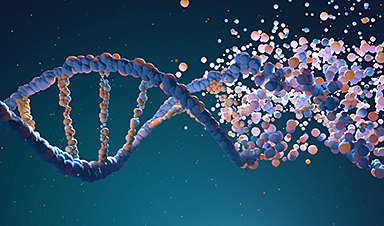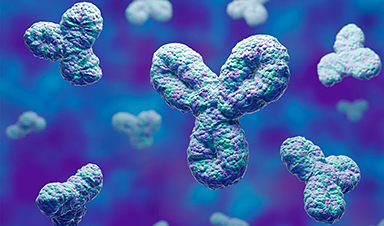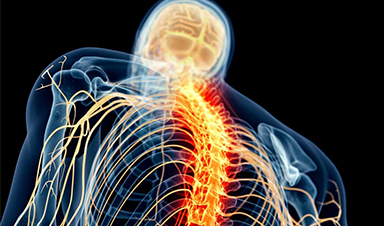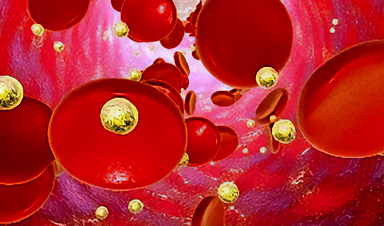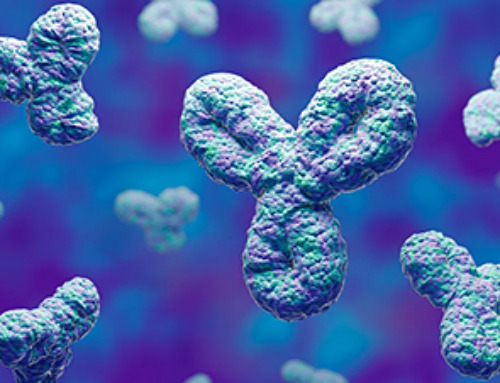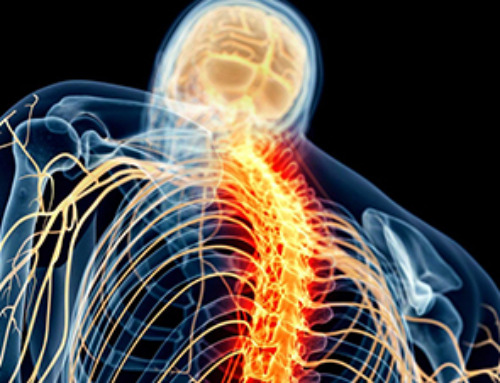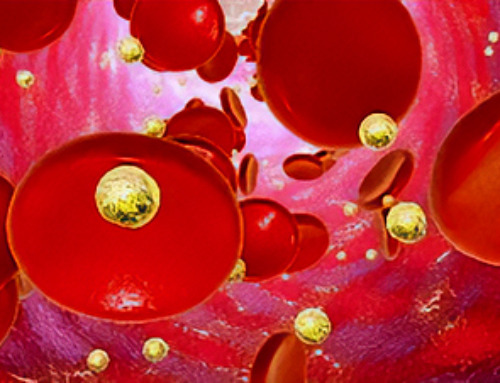Scientists testing a new method of sequencing single cells have unexpectedly changed our understanding of the rules of genetics.
The genome of a protist has revealed a seemingly unique divergence in the DNA code signaling the end of a gene, suggesting the need for further research to better understand this group of diverse organisms.
Dr. Jamie McGowan, a postdoctoral scientist at the Earlham Institute, analyzed the genome sequence of a microscopic organism – a protist – isolated from a freshwater pond at Oxford University Parks.
Unexpected Genetic Findings in Protists
However, when researchers looked at the genetic code, the protist Oligohymenophorea sp. PL0344 turned out to be a novel species with an unlikely change in how its DNA is translated into proteins.
Dr. McGowan said: “It’s sheer luck we chose this protist to test our sequencing pipeline, and it just shows what’s out there, highlighting just how little we know about the genetics of protists.”
It is hard to make any statements about protists as a group. Most are microscopic, single-celled organisms like amoebas, algae, and diatoms, but larger multicellular protists exist – such as kelp, slime molds, and red algae.
“The definition of a protist is loose – essentially it is any eukaryotic organism which is not an animal, plant, or fungus,” said Dr. McGowan. “This is obviously very general, and that’s because protists are an extremely variable group.
“Some are more closely related to animals, some more closely related to plants. There are hunters and prey, parasites and hosts, swimmers, and sitters, and there are those with varied diets while others photosynthesize. Basically, we can make very few generalizations.”
Ciliates and Genetic Code Variations
Oligohymenophorea sp. PL0344 is a ciliate. These swimming protists can be seen with a microscope and are found almost anywhere there is water.
Ciliates are hotspots for genetic code changes, including reassignment of one or more stop codons – the codons TAA, TAG, and TGA. In virtually all organisms, these three stop codons are used to signal the end of a gene.
Variations in the genetic code are extremely rare. Among the few variants of the genetic code reported to date, the codons TAA and TAG virtually always have the same translation, suggesting that their evolution is coupled.
“In almost every other case we know of, TAA and TAG change in tandem,” explained Dr. McGowan. “When they aren’t stop codons, they each specify the same amino acid.”
DNA Translation Anomalies
DNA is like a blueprint of a building. It does not do anything in and of itself – it provides instructions for work to be done. In order for a gene to have an impact, the blueprint must be “read” and then built into a molecule which has a physical effect.
For DNA to be read, it is first transcribed into an RNA copy. This copy is taken to another area of the cell where it is translated into amino acids, which are combined to make a three-dimensional molecule. The translation process starts at the DNA start codon (ATG) and finishes at a stop codon (normally TAA, TAG, or TGA).
In Oligohymenophorea sp. PL0344, only TGA functions as a stop codon – although Dr. McGowan found there are more TGA codons than expected in the ciliate’s DNA, believed to compensate for the loss of the other two. Instead, TAA specifies lysine and TAG specifies glutamic acid.
“This is extremely unusual,” Dr. McGowan said. “We’re not aware of any other case where these stop codons are linked to two different amino acids. It breaks some of the rules we thought we knew about gene translation – these two codons were thought to be coupled.
“Scientists attempt to engineer new genetic codes – but they are also out there in nature. There are fascinating things we can find, if we look for them.
“Or, in this case, when we are not looking for them.”
Reference: “Identification of a non-canonical ciliate nuclear genetic code where UAA and UAG code for different amino acids” by Jamie McGowan, Estelle S. Kilias, Elisabet Alacid, James Lipscombe, Benjamin H. Jenkins, Karim Gharbi, Gemy G. Kaithakottil, Iain C. Macaulay, Seanna McTaggart, Sally D. Warring, Thomas A. Richards, Neil Hall and David Swarbreck, 5 October 2023, PLOS Genetics.
DOI: 10.1371/journal.pgen.1010913
This research was funded by the Wellcome Trust as part of the Darwin Tree of Life Project, and supported by the Earlham Institute’s core funding from the Biotechnology and Biological Sciences Research Council (BBSRC), part of UKRI.
News
Specially engineered antibody delivers RNA therapy to treatment-resistant tumors
Elias Quijano, PhD; Diana Martinez-Saucedo, PhD; Zaira Ianniello, PhD; and Natasha Pinto-Medici, PhD, there are 25 other contributors, most from Yale's Department of Therapeutic Radiology and from the departments of genetics, molecular biophysics and [...]
Vaccinated women face fewer cervical cancer risks
New data from Denmark shows the HPV vaccine’s powerful long-term impact, while also revealing why cervical cancer screening is still essential. A Danish study published in the journal Eurosurveillance reports that women who received the human [...]
3D-printed implant offers a potential new route to repair spinal cord injuries
A research team at RCSI University of Medicine and Health Sciences has developed a 3-D printed implant to deliver electrical stimulation to injured areas of the spinal cord, offering a potential new route to [...]
Nanocrystals Carrying Radioisotopes Offer New Hope for Cancer Treatment
The Science Scientists have developed tiny nanocrystal particles made up of isotopes of the elements lanthanum, vanadium, and oxygen for use in treating cancer. These crystals are smaller than many microbes and can carry isotopes of [...]
New Once-a-Week Shot Promises Life-Changing Relief for Parkinson’s Patients
A once-a-week shot from Australian scientists could spare people with Parkinson’s the grind of taking pills several times a day. The tiny, biodegradable gel sits under the skin and releases steady doses of two [...]
Weekly injectable drug offers hope for Parkinson’s patients
A new weekly injectable drug could transform the lives of more than eight million people living with Parkinson's disease, potentially replacing the need for multiple daily tablets. Scientists from the University of South Australia [...]
Most Plastic in the Ocean Is Invisible—And Deadly
Nanoplastics—particles smaller than a human hair—can pass through cell walls and enter the food web. New research suggest 27 million metric tons of nanoplastics are spread across just the top layer of the North [...]
Repurposed drugs could calm the immune system’s response to nanomedicine
An international study led by researchers at the University of Colorado Anschutz Medical Campus has identified a promising strategy to enhance the safety of nanomedicines, advanced therapies often used in cancer and vaccine treatments, [...]
Nano-Enhanced Hydrogel Strategies for Cartilage Repair
A recent article in Engineering describes the development of a protein-based nanocomposite hydrogel designed to deliver two therapeutic agents—dexamethasone (Dex) and kartogenin (KGN)—to support cartilage repair. The hydrogel is engineered to modulate immune responses and promote [...]
New Cancer Drug Blocks Tumors Without Debilitating Side Effects
A new drug targets RAS-PI3Kα pathways without harmful side effects. It was developed using high-performance computing and AI. A new cancer drug candidate, developed through a collaboration between Lawrence Livermore National Laboratory (LLNL), BridgeBio Oncology [...]
Scientists Are Pretty Close to Replicating the First Thing That Ever Lived
For 400 million years, a leading hypothesis claims, Earth was an “RNA World,” meaning that life must’ve first replicated from RNA before the arrival of proteins and DNA. Unfortunately, scientists have failed to find [...]
Why ‘Peniaphobia’ Is Exploding Among Young People (And Why We Should Be Concerned)
An insidious illness is taking hold among a growing proportion of young people. Little known to the general public, peniaphobia—the fear of becoming poor—is gaining ground among teens and young adults. Discover the causes [...]
Team finds flawed data in recent study relevant to coronavirus antiviral development
The COVID pandemic illustrated how urgently we need antiviral medications capable of treating coronavirus infections. To aid this effort, researchers quickly homed in on part of SARS-CoV-2's molecular structure known as the NiRAN domain—an [...]
Drug-Coated Neural Implants Reduce Immune Rejection
Summary: A new study shows that coating neural prosthetic implants with the anti-inflammatory drug dexamethasone helps reduce the body’s immune response and scar tissue formation. This strategy enhances the long-term performance and stability of electrodes [...]
Scientists discover cancer-fighting bacteria that ‘soak up’ forever chemicals in the body
A family of healthy bacteria may help 'soak up' toxic forever chemicals in the body, warding off their cancerous effects. Forever chemicals, also known as PFAS (per- and polyfluoroalkyl substances), are toxic chemicals that [...]
Johns Hopkins Researchers Uncover a New Way To Kill Cancer Cells
A new study reveals that blocking ribosomal RNA production rewires cancer cell behavior and could help treat genetically unstable tumors. Researchers at the Johns Hopkins Kimmel Cancer Center and the Department of Radiation Oncology and Molecular [...]
